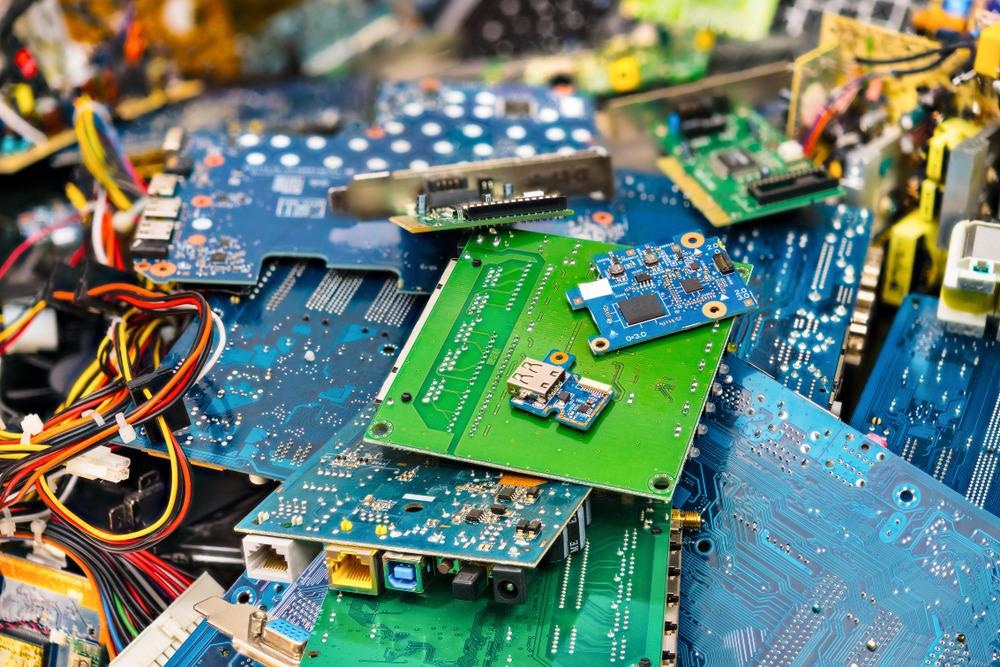Recently, rare earth elements (REE) have become a fundamental part of advanced industries. However, industries suffer a shortage in REE materials, predominantly due to the lack of robust recovery strategies associated with sustainable REE removal. Scientists have used nanotechnology to develop nanocellulose that can effectively recover REE, using a novel and sustainable method.

Image Credit: tina7si/Shutterstock.com
Besides being useful in traditional sectors, rare earth elements are useful metals in many futuristic industries, such as lasers, fluorescent lamps, atomic batteries, engine turbines, and super magnets.
At present, China is the leading supplier and exports above 70% of the world's REE supply. The ever-increasing demand for REE and limited resources have resulted in massive enhancement in its cost. This is the reason why many countries have regarded REEs as strategic resources.
Neodymium, an REE material, has been listed among the 50 minerals that the U.S. government designated to be critical to its national security.
E-Waste and Rare Earth Elements
Researchers have pointed out that technological advancements have rapidly increased electronic waste (e-waste), such as old computers, printed circuit boards, televisions, and many other electronic devices.
These e-wastes, which are potentially toxic trash, have been piled all over the world and have become a major environmental threat. Some scientists have focussed on recycling e-waste, and they believe that this waste could become a source for many important and high-demand elements, including rare earth metals. Researchers have recently developed a technology to recover neodymium from e-waste trash worldwide.
Neodymium-an Important Rare Earth Element
Neodymium (Nd) is a rare earth element that belongs to the lanthanide series of chemical elements.
Nd does not occur naturally in metallic or in a pure form. However, this metal is reported to be widely distributed in the Earth's crust. Nd has been characterized as a malleable and ductile metal and is used to develop strong magnets with many applications. This silvery-white metal gets readily oxidized in air and, therefore, must be stored in an air-tight, vacuum condition.
A commonly used form of Nd3+ is Nd2Fe14B. As stated above, Nd is used in many industries, including wind turbines, computer hard drives, electric vehicle motors, loudspeakers, generators, and in-ear headphones.

Image Credit: KPixMining/Shutterstock.com
Nanoengineered Cellulose Used to Recover Rare Earth Elements
Amir Sheikhi, an assistant professor at the Pennsylvania State University, and his colleagues have developed an innovative method associated with extracting Nd from other substances, such as e-waste, with the help of cellulose.
Many studies have previously used adsorbents, such as silica, clay, nanotubes, and chitosan for REE recovery. However, cellulose is the most affordable and abundantly present raw material that has rarely been used as an adsorbent for REEs extraction.
The research team nano-engineered cellulose, and used it to create a sustainable and bio-based technology. This technology is known as anionic hairy nanocellulose (AHNC) that can selectively remove neodymium ions (Nd3+) from aqueous media.
Here, scientists have negatively charged the hairy nanoparticles to attract and bind with the positively charged neodymium ions (Nd3+. This binding results in nanoparticle-NB aggregation into larger pieces that can be easily recycled and reused.
Sheikhi explained that the hairy cellulose nanocrystals could bind selectively to Nd3+ and, hence, separate them from other ions, such as iron, calcium, and sodium. These nanoparticles appear to be "hairy" due to cellulose's chain-like attachment, i.e., cellulose units are attached end-to-end. The hairy nanomaterials perform critical chemical functions.
AHNC technology consists of completely solubilized dicarboxylated cellulose (DCC) chains and cellulose nanocrystals (CNC). Compared to conventional CNC, the DCC hairs possess a greater charge density, i.e., approximately one order of magnitude higher than the CNC. In this technology, the polyanionic hairs can remove 264 milligrams of Nd3+ of the nano adsorbents within seconds.
Advantage of Anionic Hairy Nanocellulose Technology
To date, this removal technology has enabled the highest removal rate of Nd3+ with the shortest contact time, and the biorenewability of cellulose complements this approach.
Scientists have further indicated that the addition of complementary calcium ion-mediated colloidal bridging in AHNC technology further enhances its ability to remove Nd3+ from a liquid substrate. Besides significant removal of Nd3+ from e-waste, rare earth elements could also be extracted from unused mining tails, industrial wastewater, and e-waste in the future. Scientists are optimistic that this REE recycling technology will positively impact many different industries.
One of the important aspects of this technology is that it operates at a low cost. Sheikhi also observed that most of the methods available for recycling REE are not eco-friendly.
Some of the conventional methods include solvent extraction, precipitation, ion exchange, electrochemical, etc. Most of these methods rely on hazardous chemicals and consume high energy. Additionally, some use highly acidic conditions to extract REE in chemical reactions.
Conclusion
The development of a novel, cost-effective, and environmentally friendly technology for the sustainable recovery of Nd would benefit many industries. Scientists are optimistic that the novel AHNC technology will allow the United States to compete with other giants like China, in recycling and independently producing REE.
Continue reading: Solid Mercury Nanoparticle Synthesis Suggests Sustainable Future for Electroanalytical Chemistry.
References and Further Reading
Wamea, P, et al. (2022) Nanoengineering cellulose for the selective removal of neodymium: Towards sustainable rare earth element recovery. Chemical Engineering Journal. 428, 131086.Available at: https://doi.org/10.1016/j.cej.2021.131086
Balaram, V. (2019) Rare earth elements: A review of applications, occurrence, exploration, analysis, recycling, and environmental impact. Geoscience Frontiers. 10(4). pp.1285-1303. Available at: https://doi.org/10.1016/j.gsf.2018.12.005
Zhao, F. et al. (2017) Polyethylenimine-cross-linked cellulose nanocrystals for highly efficient recovery of rare earth elements from water and mechanism study. Green Chenistry. 19 (20). Available at: https://dx.doi.org/10.1039/C7GC01770G
Disclaimer: The views expressed here are those of the author expressed in their private capacity and do not necessarily represent the views of AZoM.com Limited T/A AZoNetwork the owner and operator of this website. This disclaimer forms part of the Terms and conditions of use of this website.